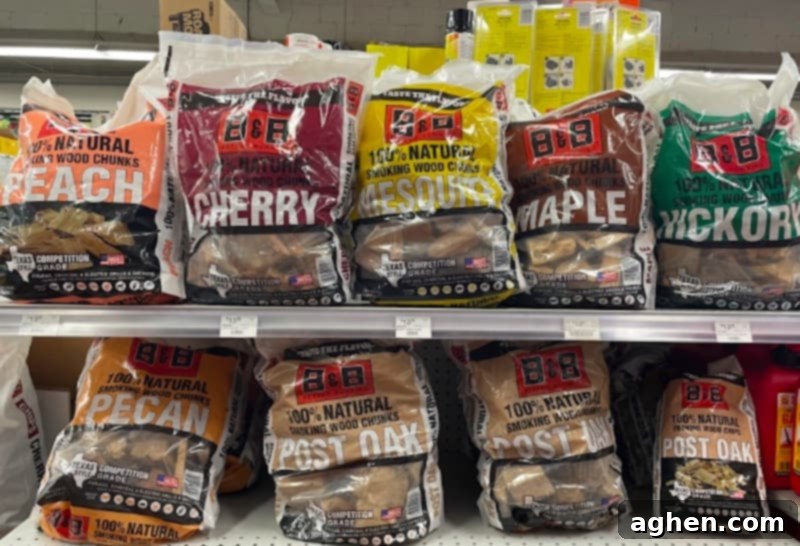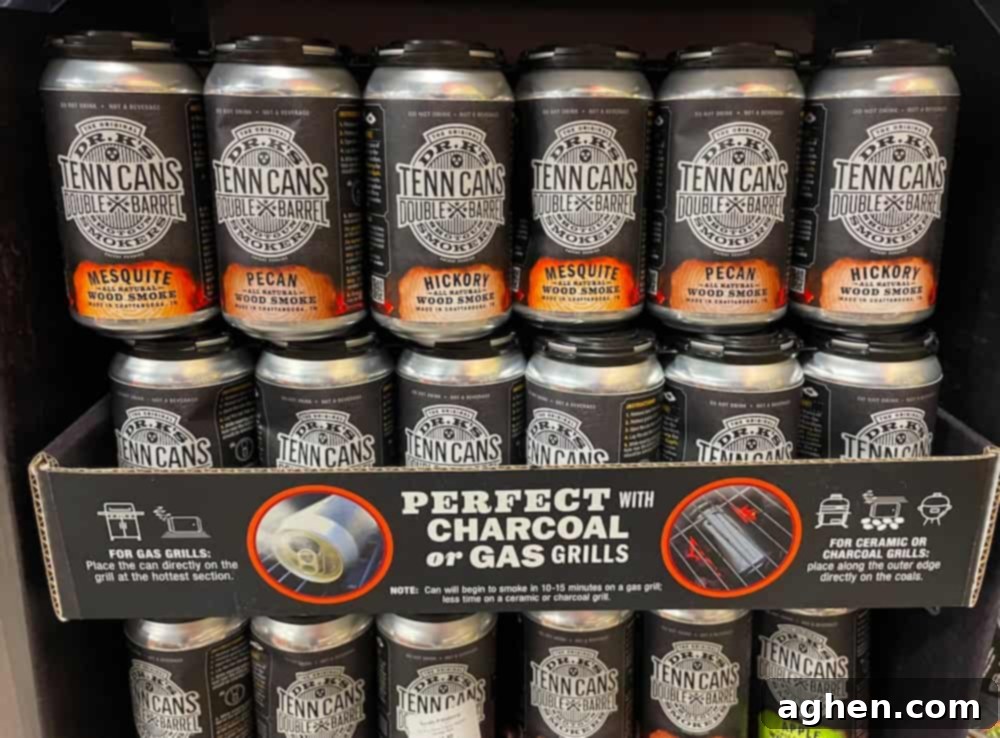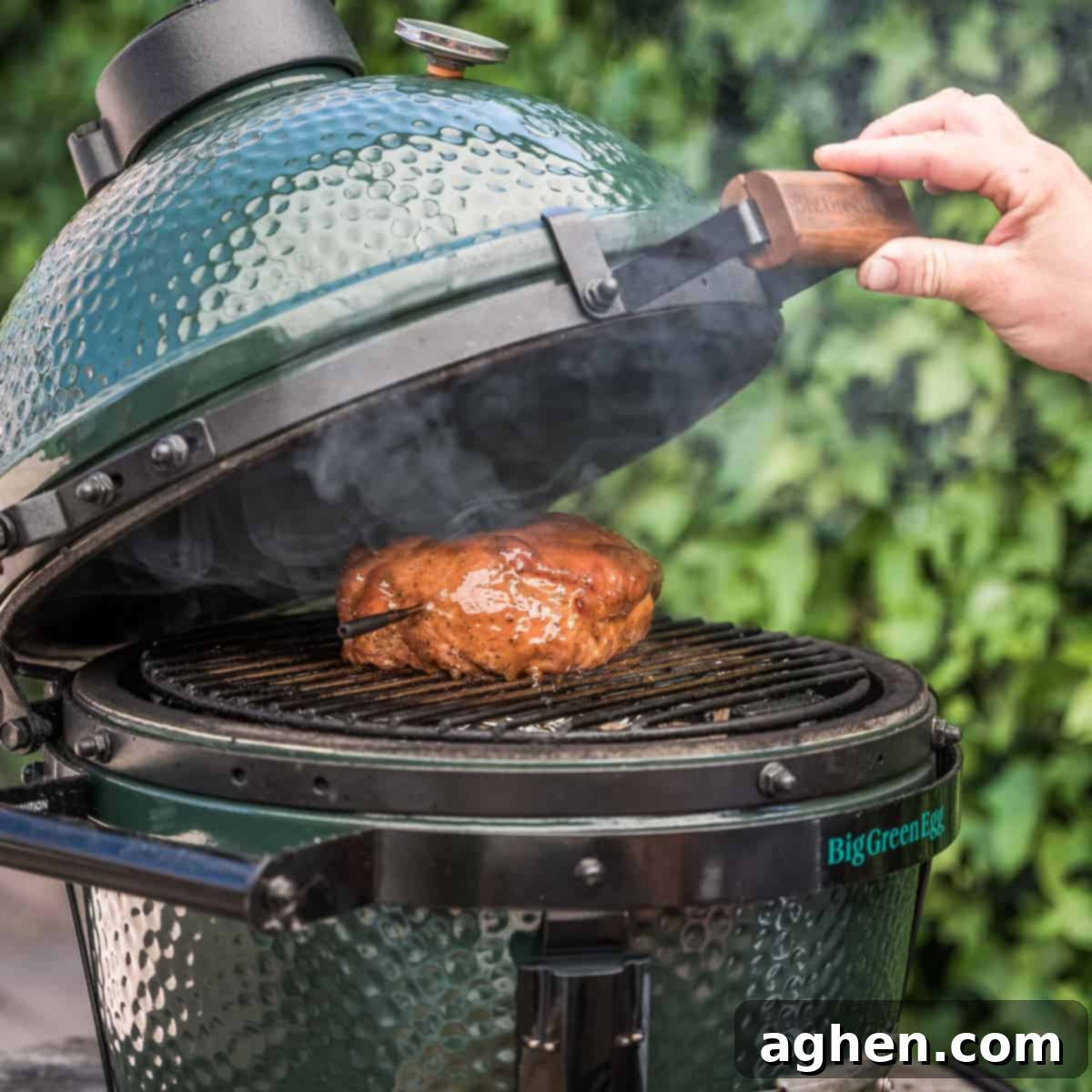Mastering the Art of Smoke: Your Ultimate Guide to Unforgettable Flavor on the Big Green Egg
Unlocking the full potential of your barbecue experience means mastering the art of smoke. Whether you’re smoking, grilling, or even baking, infusing your food with delicious wood-fired flavor elevates every dish from ordinary to extraordinary. The Big Green Egg, known for its versatility and precise temperature control, is the perfect vessel for this culinary journey. With an array of wood types and techniques at your disposal, you can tailor the smoky essence to complement any food. This comprehensive guide offers 10 essential tips to ensure your food tastes as incredible as it smells, helping you achieve perfect smoke flavor every time.
Before you even think about lighting your charcoal, the foundation of a great smoke session begins with proper preparation. For optimal airflow, which is critical for consistent temperatures and clean-burning smoke, always start by removing any residual ash from previous cooks. A quick shake of the leftover coals, followed by using your Big Green Egg ash removal tool and matching ash pan, will clear the way. This simple step ensures maximum airflow throughout your kamado grill, laying the groundwork for that incredible, pure smoke taste in your meats, poultry, fish, and vegetables.
- 10 Skills Every Big Green Egg Chef Needs to Master

1. Start With Natural Lump Charcoal for Pure Flavor
The very first step toward achieving truly exceptional smoke flavor begins with your choice of fuel. Always opt for natural lump charcoal, such as B&B Mesquite Lump Charcoal or Big Green Egg Natural Oak and Hickory Lump Charcoal. Unlike briquettes, which often contain binders and chemical additives, natural lump charcoal is made from pure carbonized wood. This purity ensures a clean burn, higher heat, and, most importantly, a smoke flavor free from unwanted chemical tastes. To build your fire, start with some larger pieces of lump charcoal and fill the fire box to the top if you’re planning a long smoking session, or a little less for a quicker grilling task. Insert 2-3 natural starter cubes and ignite them. Even if you do nothing else, you’ll still be cooking with a superior, flavorful smoke. But now, let’s explore how to elevate that flavor even further.
2. Enhance Smoke Flavor with Natural Wood Chunks
For authentic, deep smoke flavor, especially during low-and-slow smoking, natural wood chunks are indispensable. Sourced from regions famous for their barbecue traditions, brands like Gourmet Wood pecan chunks are a favorite among professional chefs, offering that classic Texas-style beef brisket flavor. Alternatively, you can find quality options like Jealous Devil cherry wood blocks at retailers like Home Depot. Once your lump charcoal is glowing steadily and you’re ready to cook, place two or three chosen wood chunks directly on top of the hot coals. Remember, never use briquettes when adding wood chunks, as they can impart off-flavors. For indirect cooking, essential for smoking, insert the convEGGtor with its legs up. A pro tip is to wrap the top of the convEGGtor with aluminum foil beforehand; this helps keep it clean and looking good for future uses. Keep the lid closed as your Big Green Egg gradually comes up to the target smoking temperature of 235-245°F, relying on accurate thermometers to monitor the internal temperature without lifting the lid.
3. Less is More: The Right Amount of Wood Chunks
Contrary to popular belief, you don’t need a massive amount of wood chunks for a long smoking session. Just two or three wood chunks are typically sufficient for an entire cook. The most significant release of smoke flavor, which will bless your barbecue with its delicious essence, occurs within the first three hours of cooking. After this initial period, the wood will have largely expended its flavorful compounds. Maintaining a consistent temperature and a closed lid during this crucial phase is paramount. It will take every ounce of your willpower not to lift the lid and simply breathe in the intoxicating aroma, which often smells like spring rain or a cozy campfire. However, resist this temptation! Each time you open the lid, you lose valuable heat and smoke, potentially extending your cooking time and diminishing the desired smoke penetration. Patience truly is a virtue in barbecue, and your steadfastness will be rewarded with deeply flavorful results.
4. Adapt Wood Chunks for High-Temperature Grilling and Searing
While wood chips are often preferred for quick bursts of smoke at higher temperatures, wood chunks can also be effectively used for high-temperature direct grilling and searing on your Big Green Egg. The application method differs significantly from low-and-slow smoking. If your goal is to achieve quick, intense heat for direct grilling, start your fire and leave the dome open for 7-10 minutes. This allows the charcoal to catch properly and generate significant heat. THEN, add your chosen wood chunks directly onto the hot coals. For high-temperature grilling, the convEGGtor is not used, as its purpose is to create an indirect cooking zone. The direct exposure of the wood chunks to high heat will produce a more immediate and robust smoke, perfect for searing steaks, chops, or vegetables that benefit from a quick, smoky char.
5. Maximizing Flavor with Wood Chips
Wood chips offer a popular and versatile alternative to larger wood chunks, particularly useful for shorter cooks or when you desire a burst of smoke rather than a sustained, gradual release. Products like B&B Championship Blend are widely available and excellent for this purpose. When using wood chips on your Big Green Egg, you have a few effective methods. One approach is to sprinkle them around the outside edge of the charcoal ring, taking care to avoid blocking the crucial airflow holes in the fire box. This allows them to smolder gradually. A superior option, especially if you have ample space on your cooking surface (perhaps with an EGGspander system), is to use a vented smoker box. This dedicated accessory holds the chips and allows smoke to escape freely while preventing them from igniting too quickly. Alternatively, you can loosely wrap the wood chips in a heavy-duty aluminum foil pouch, leaving the top open or perforated to emit the flavorful smoke. This method works well for managing the intensity and duration of the smoke, making wood chips a flexible choice for various grilling and smoking applications.
- 12 Big Green Egg Accessories You Need Now
6. The Soaking Debate: To Soak or Not to Soak Wood Chips and Chunks
The question of whether to soak wood chunks or chips before smoking is one of the most hotly debated topics among barbecue enthusiasts and Big Green Egg experts, with strong opinions on both sides. Ultimately, soaking is optional, and your preference will likely depend on the results you seek. If you choose to soak wood chips, be aware of a few key effects: it will cause a slight initial drop in the EGG’s temperature as the water evaporates; it tends to yield a more intense, sometimes denser, smoky flavor; and you will observe initial steam development rather than immediate smoke. Proponents of dry wood argue that soaking simply creates steam, which must evaporate before the wood can smolder and produce smoke, thus delaying the desired effect. They believe dry wood ignites faster and produces a cleaner smoke more quickly. For decades, I have personally always soaked my wood chips, whether for a charcoal grill, gas grill, Weber, Traeger pellet grill, or even a hibachi. And often, it wasn’t just in water, but in the same beer I was enjoying during the cook. For me, tradition wins, adding a subtle beer aroma and a ritualistic element to the experience. Experiment with both dry and soaked methods to discover what works best for your palate and your specific cooking style.
7. Infuse Flavor with Soaked Grilling Planks for Fish and Poultry
Another fantastic method to infuse your food with wonderful wood flavoring is through the use of grilling planks. These thin sheets of wood, typically cedar or alder, are placed directly on the cooking grid with your food on top, such as a salmon fillet or duck breast. Grilling planks act as a natural heat shield, making a convEGGtor unnecessary, as they protect delicate foods from direct high heat. The underside of the plank will smolder gently, releasing a refined, aromatic smoky flavor that beautifully complements fish, seafood, and poultry. Cedar planks impart a distinct, slightly sweet and pungent smoke, while alder offers a milder, earthier profile. It is absolutely crucial to soak any wood grilling planks for at least one hour prior to use – preferably longer – to prevent them from catching fire on your hot grill. A well-soaked plank will smolder and smoke, adding exquisite flavor, rather than burning up and ruining your meal. This method creates a moist, flavorful environment that is hard to replicate otherwise.
8. Understand the Signals: Blue Smoke Means Go
Patience and observation are key in the world of smoking. Once your Big Green Egg has reached your desired target temperature for cooking, it’s essential to monitor the top vent carefully. Initially, you might see thick, billowy white smoke. This “dirty” white smoke indicates incomplete combustion and contains acrid compounds that can impart a bitter, unpleasant taste to your food. You must wait for this heavy white smoke to disappear. It should be replaced by a clear, thin, almost invisible stream of blue smoke. This “thin blue smoke” is the holy grail for barbecue enthusiasts. It signifies a clean burn and perfectly combusted wood, producing the sweet, desirable smoky flavor that will elevate your food. Once you see this thin blue smoke, you’re good to go – it’s the signal that your EGG is ready to work its magic and infuse your culinary creation with pure, delicious smoke.
- 13 Liquid Smoke Substitutes to Consider for Your Recipe

9. Exploring Innovative Options: How About Some Canned Smoke?
For those looking for unconventional ways to introduce smoke flavor, or who primarily use gas grills, “canned smoke” offers an interesting alternative. During a recent visit to Lodge Cast Iron in South Pittsburg, Tennessee, I encountered a display of Dr. K’s Tenn Cans from nearby Chattanooga – a product affectionately known as “double barrel shotgun smokers.” While primarily designed to transform a gas grill into a smoker, the company also states that these innovative cans can be effectively used on kamado cookers like the Big Green Egg. To use them, simply place the can(s) along the outer edge directly on your hot charcoal. An important note from the manufacturer is that it takes about 10-15 minutes faster to start smoking on charcoal compared to a gas grill. The manufacturer also advises that if the can gets too hot during the process, you should “reduce the air flow on your grill and the can will cool and begin to smoke again.” While the idea of an aluminum can interacting with flaming charcoal raises questions about potential material integrity, this long-standing company supports a local food bank, making it a product worth considering for the adventurous pitmaster. It’s a novel approach to adding smoke, particularly useful for those who might not have traditional wood chunks readily available.
10. Expand Your Palate: Experiment with New Smoke Flavors and Food Pairings
Perhaps the most enjoyable and crucial tip for any aspiring smoke master is to continuously experiment with new smoke flavors and to understand the art of food pairing. The world of smoking woods is vast and diverse, with popular choices including apple, cherry, pecan, hickory, mesquite, cedar, alder, oak, beech, and even whisky barrel wood. Each of these imparts a distinct character and depth of flavor to your culinary masterpiece. Apple and cherry woods, for instance, offer a mild, fruity smoke, perfect for pork, poultry, and fish. Hickory provides a stronger, bacony flavor that beautifully complements beef and larger cuts of meat. Mesquite delivers an intense, earthy, and sometimes pungent smoke, ideal for heavy meats like brisket. Cedar and alder, as mentioned, are fantastic for fish, offering a delicate, aromatic finish. Understanding these nuances is key to becoming a true barbecue artisan. This page offers a super helpful chart detailing the most desirable pairings for each of these woods, serving as an excellent starting point for your experimentation. Some woods, with their stronger profiles, naturally go with heavier cuts of meat, while others work best with more mild-flavored meats, fish, and vegetables. Just like a wine connoisseur develops a sophisticated palate for vintages and varietals, the average BBQ pitmaster cultivates an acute sense of smell and taste for different wood smoke flavors. You will gradually develop an olfactory expertise that allows you to instinctively combine the right smoke with the right food, astonishing your guests with your savvy ability to blend aroma and taste into an unforgettable dining experience. Embrace the journey of discovery, and let your Big Green Egg transform your cooking into an art form.
